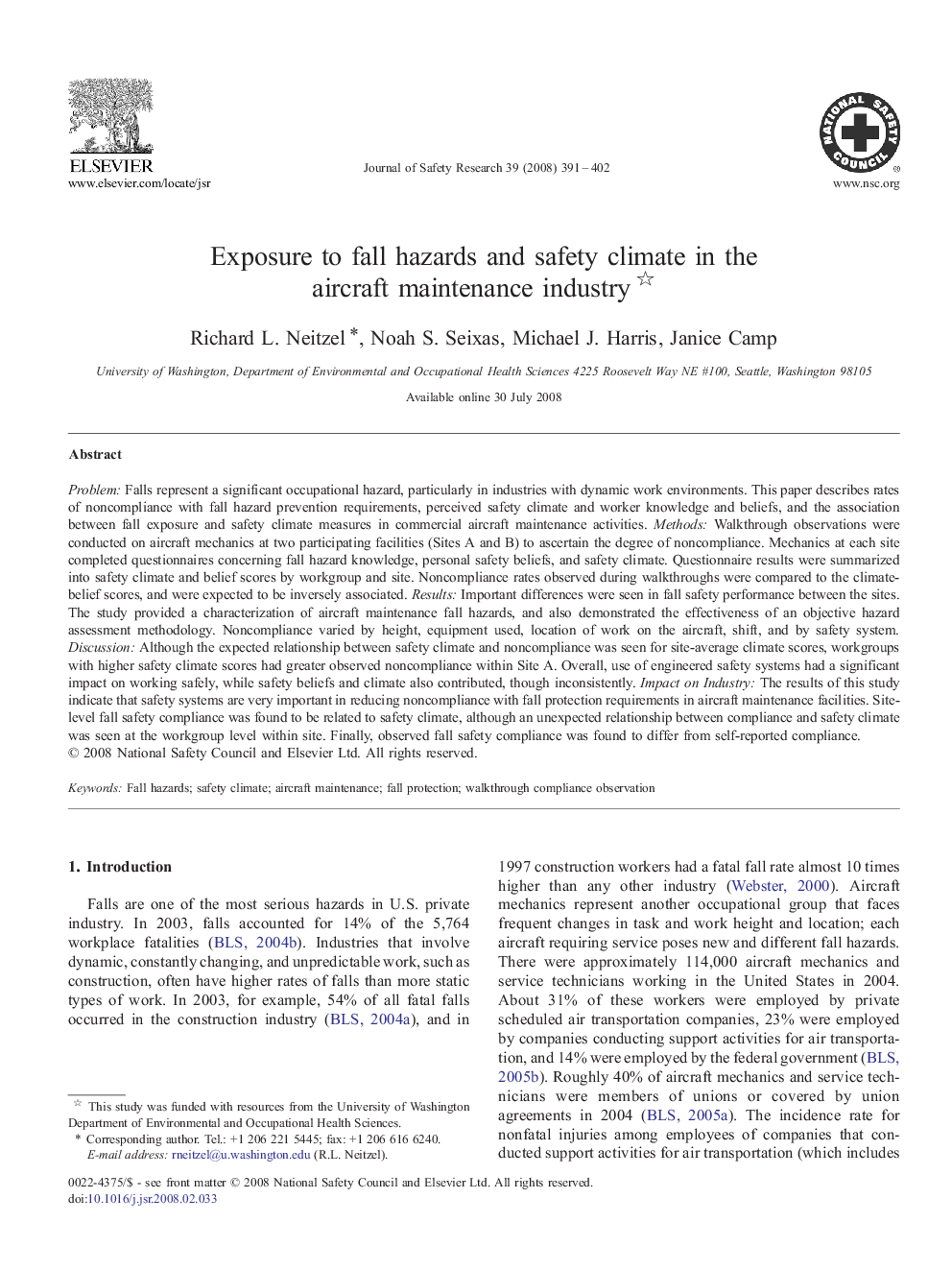| Article ID | Journal | Published Year | Pages | File Type |
|---|---|---|---|---|
| 587794 | Journal of Safety Research | 2008 | 12 Pages |
ProblemFalls represent a significant occupational hazard, particularly in industries with dynamic work environments. This paper describes rates of noncompliance with fall hazard prevention requirements, perceived safety climate and worker knowledge and beliefs, and the association between fall exposure and safety climate measures in commercial aircraft maintenance activities.MethodsWalkthrough observations were conducted on aircraft mechanics at two participating facilities (Sites A and B) to ascertain the degree of noncompliance. Mechanics at each site completed questionnaires concerning fall hazard knowledge, personal safety beliefs, and safety climate. Questionnaire results were summarized into safety climate and belief scores by workgroup and site. Noncompliance rates observed during walkthroughs were compared to the climate-belief scores, and were expected to be inversely associated.ResultsImportant differences were seen in fall safety performance between the sites. The study provided a characterization of aircraft maintenance fall hazards, and also demonstrated the effectiveness of an objective hazard assessment methodology. Noncompliance varied by height, equipment used, location of work on the aircraft, shift, and by safety system.DiscussionAlthough the expected relationship between safety climate and noncompliance was seen for site-average climate scores, workgroups with higher safety climate scores had greater observed noncompliance within Site A. Overall, use of engineered safety systems had a significant impact on working safely, while safety beliefs and climate also contributed, though inconsistently.Impact on IndustryThe results of this study indicate that safety systems are very important in reducing noncompliance with fall protection requirements in aircraft maintenance facilities. Site-level fall safety compliance was found to be related to safety climate, although an unexpected relationship between compliance and safety climate was seen at the workgroup level within site. Finally, observed fall safety compliance was found to differ from self-reported compliance.
